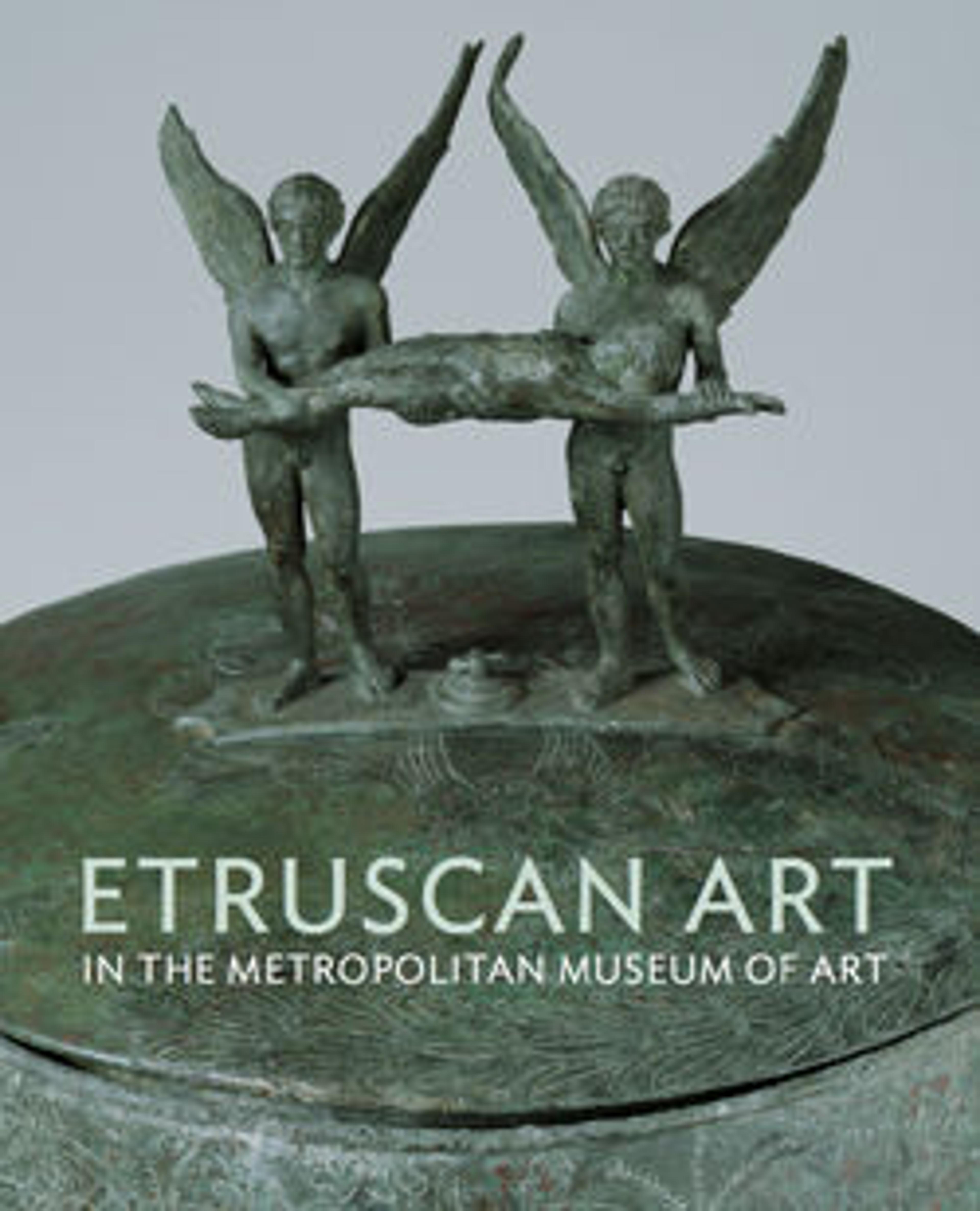Terracotta neck-amphora (jar) with lid
Around the body, winged horses and a siren
On the shoulder, ivy between eyes
The Micali Painter was the most prolific Etruscan black-figure artist of the last quarter of the sixth century B.C.. His workshop seems to have been located in Vulci, where a high proportion of his works have also been found. His style is distinctive because he gives the impression of painting his subjects with glaze, now more tightly, often quite loosely. Though he uses incised lines for articulation, they are of secondary importance.
On the shoulder, ivy between eyes
The Micali Painter was the most prolific Etruscan black-figure artist of the last quarter of the sixth century B.C.. His workshop seems to have been located in Vulci, where a high proportion of his works have also been found. His style is distinctive because he gives the impression of painting his subjects with glaze, now more tightly, often quite loosely. Though he uses incised lines for articulation, they are of secondary importance.
Artwork Details
- Title: Terracotta neck-amphora (jar) with lid
- Artist: Attributed to the Micali Painter
- Period: Archaic
- Date: ca. 525–500 BCE
- Culture: Etruscan
- Medium: Terracotta; black-figure
- Dimensions: H.: 15 7/16 in. (39.2 cm)
- Classification: Vases
- Credit Line: Purchase, 1896
- Object Number: 96.9.177a, b
- Curatorial Department: Greek and Roman Art
More Artwork
Research Resources
The Met provides unparalleled resources for research and welcomes an international community of students and scholars. The Met's Open Access API is where creators and researchers can connect to the The Met collection. Open Access data and public domain images are available for unrestricted commercial and noncommercial use without permission or fee.
To request images under copyright and other restrictions, please use this Image Request form.
Feedback
We continue to research and examine historical and cultural context for objects in The Met collection. If you have comments or questions about this object record, please contact us using the form below. The Museum looks forward to receiving your comments.
